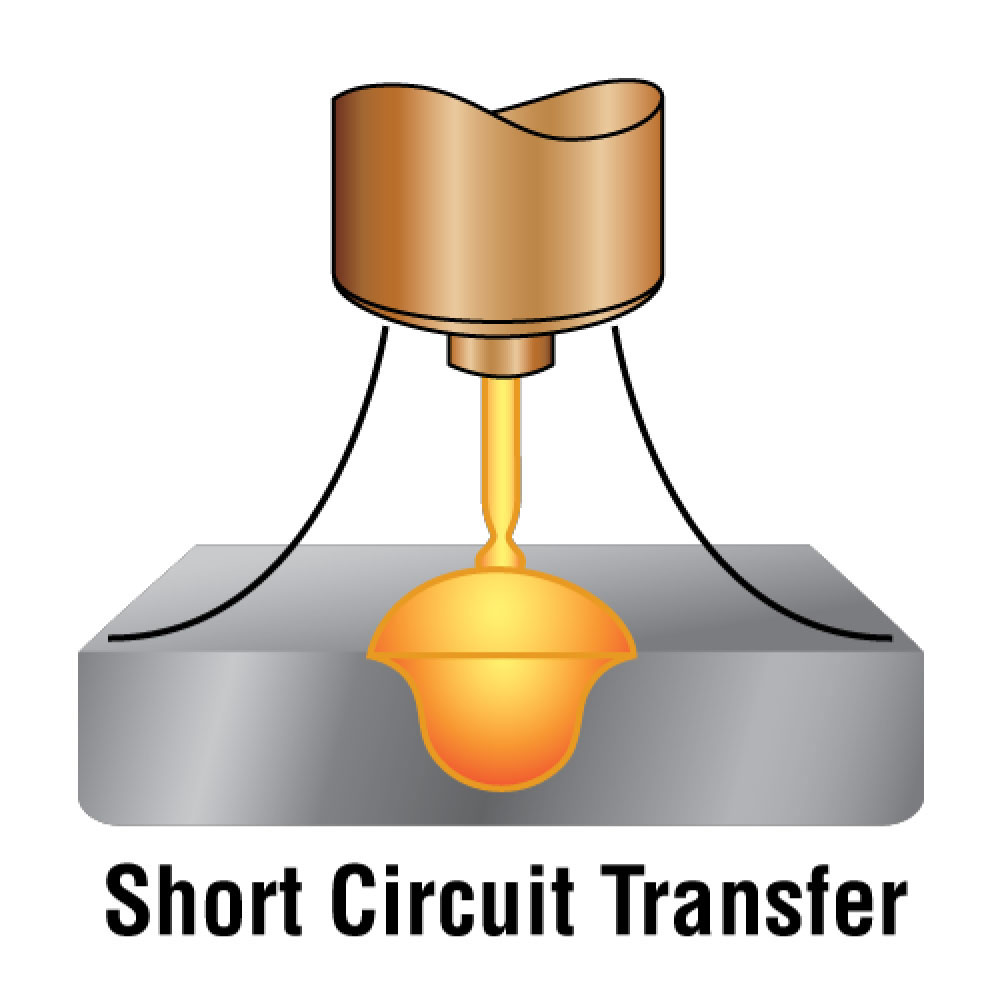Use these facts and diagrams to help you make the right choice when buying a MIG welding machine

How to determine the correct size wire
1 ampere for every 0.001 thickness
⅛″ material = .125 = 125 amperes
Wire Burn Off:
0.023 – 3.5″ wire/amp – 125 amps = 437 IPM
0.030 – 2″ wire/amp – 125 amps = 250 IPM
0.035 – 1.6″ wire/amp – 125 amps = 200 IPM
0.045 – 1″ wire/amp – 125 amps = 125 IPM
An example of how to determine wire feed speed in inches per minute (IPM) is below. A wire diameter size 0.035″ is chosen to weld on ⅛″ steel material. Use a "ballpark" amperage setting of 125 amps.
125 amps x 1.6 wire feed speed per amp = 200 IPM required wire feedspeed setting
What should I know about duty cycle?
Duty cycle is the amount of time during a 10-minute period that the welder can continuously operate at its rated output without causing heat damage to the system. For example, a Millermatic® 252 has a 60 percent duty cycle at 200 amps of DC output. It can weld for six minutes out of 10 and then needs to cool for the remaining four minutes.
How much welding or cutting output power do I need?
Note: Units listed in more than one classification share attributes of both.
Generator power
Out in the field, you may need an engine-driven welder/generator to supply 120 or 240 VAC power to run tools, lights and to start motors. Miller engine drives are packed with power and the larger units even offer option packages that add 10 to 20 kW of generator power.
What kind of input power do I have available?
Out in the field, you may need an engine-driven welder/generator to supply 120 or 240 VAC power to run tools, lights and to start motors. Miller’s engine drives are packed with power and the larger units even offer option packages that add 10 to 20 kW of generator power.
Is portability needed?
Can you bring the work to the machine, or does the machine need to go to the work? Check the Product Guide pages for types of portability:
Small Machines – Mild Steel Applications
Mid-size Machines – Mild Steel Applications
Mid-size Machines – Stainless Steel Applications
Mid-size Machines – Aluminum Applications
ARCAL shielding gases are equipped with either SMARTOP™ or EXELTOP™